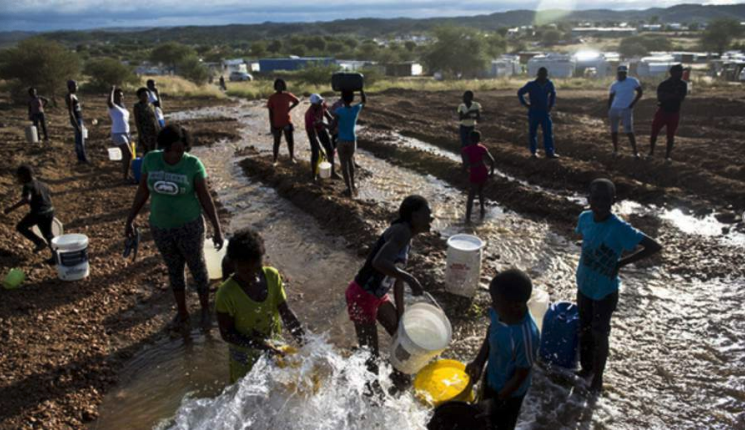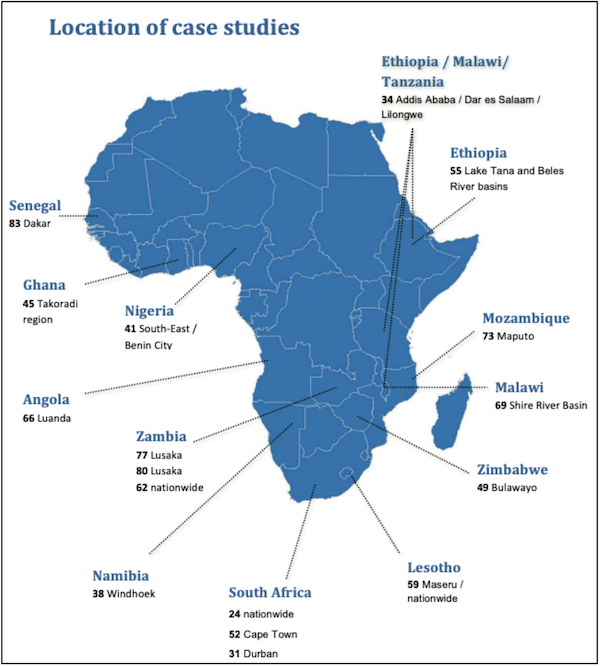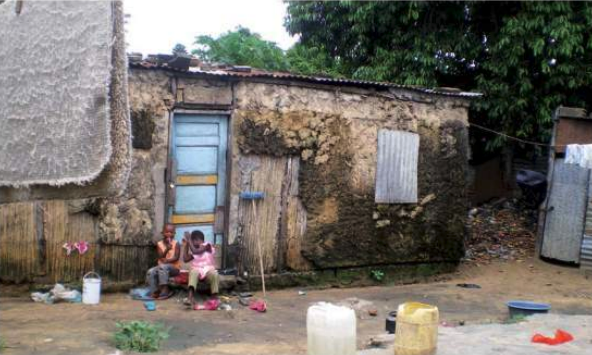Inspiring Climate Action in African Cities

Introduction
Adapting to risks is essential to ensure sustainable development in Africa’s cities. Therefore, this working paper aims to enhance scientific understanding, foster policy debate, and spur action towards promising adaptation pathways. The ultimate goal is to enhance urban areas’ resilience, and to reduce the vulnerability of these regions to the challenges they face.
This Inspiring Climate Action in African Cities FRACTAL project working paper* is the result of collaboration to identify a selected compilation of 17 diverse case studies from Africa – some of which are linked below in the ‘Case Study’ section.
*download the full working paper from the right-hand column.
Challenges
The most pressing climate- and human-induced issues that African city planners and governments face in urban areas highlighted by the cases are:
- Climate change itself. Increased risk related to flooding, drought, extreme temperatures, sea level rise, and changes in seasonal rainfall patterns and intensity all have consequences for health, availability of food, water, shelter, livelihoods and security.
- The effects and consequences of climate change. On the African continent, the environmental repercussions are desertification, loss of biodiversity, deterioration and draining of wetlands, environmental degradation, and soil erosion.
- The rapid pace of urban population growth. Entire urban regions – not solely cities acting alone – must plan in truly multi-faceted ways. Cooperation and coordination must encompass both private and public sectors.
- The ongoing – and growing – challenges related to water delivery and wastewater removal. Access to clean drinking water, and effective removal of wastewater take on new urgency in the face of longer-lasting droughts and more-severe flooding.
- The lack of institutional capacity to adapt to new realities and to address new needs. Government resources – human, financial and administrative – need to anticipate, prepare for, and respond to changing ecological and economic situations.
- The increased competition for scarce resources. Water, energy and food sectors compete for the same resources that also bear the brunt of the increased stress from climate change.(e.g. energy needs for distributing potable water and treating wastewater; water for energy production, crop production and domestic use).
Case Studies

Find the cases presented individually on weADAPT below organised by broad topics covered.
Ecosystems and Biodiversity
- Ecological Infrastructure for Resilience and Job Creation in South Africa
- The Buffelsdraai Community Reforestation Project
- Mainstreaming Biodiversity and Ecosytem Services for Effective Management in Cities
Urban Water Resources, Agriculture and Energy
- Off-Grid Power Generation Solutions in the Takoradi Region, Ghana
- Urban Agriculture: Improved Governance for Resilience in Bulawayo, Zimbabwe
- Meeting Ethiopia’s Development Goals by Addressing Links between Water, Energy and Food
- Africa’s First Direct Water Reuse Plant in Windhoek, Namibia
- Tackling Soil Erosion and Improving Lives in South- Eastern Nigeria
- Cape Town, South Africa: An integrated approach to river catchment management
- Lesotho: Tackling water insecurity: an assessment of future national water management developed as part of the 2016 Lesotho Water Security and Climate Change Assessment.
- Reconciling Water, Energy and Agricultural Sector Demands in Zambia
Infrastructure, Settlements and Waste Management
- Stakeholder-Based Development Planning of the Shire River Basin’s Water and Natural Resources in Southern Malawi
- Improved Waste Management through Public-Private Partnerships in Lusaka
- Building Happy and Integrated Neighbourhoods in Luanda, Angola
- Maputo, Mozambique: Private-Public-People networks for climate compatible development addressing adaptation and disaster risk
- Lusaka, Zambia: Building disaster risk reduction and emergency response to flooding
- Community-Based Action against Flood Risks in Dakar
Key Lessons

Adapting to risks is essential to ensure sustainable development in Africa’s cities. Therefore, this working paper aims to enhance scientific understanding, foster policy debate, and spur action towards promising adaptation pathways. The ultimate goal is to enhance urban areas’ resilience, and to reduce the vulnerability of these regions to the challenges they face.
Each case offers its own, unique story – a singular combination of circumstances, players, challenges,ideas and solutions. Yet, ultimately, the cases share certain lessons – integral characteristics that offer important insights about adapting to climate change.
Key lessons:
- Trust between different stakeholders involved in the adaptation process to secure their buy-in, and to enhance the likelihood of a project’s long-term sustainability.
- Establish partnerships and collaborate across sectors. A transdisciplinary team of stakeholders can add new perspectives on existing problems.
- Capitalise on the capacities offered by women and youth. They constitute a workforce with often untapped potential that can be used to catalyse adaptation activities.
- Consider the knowledge, capacity and natural resources of local communities. Community- and ecosystem-based approaches are often more feasible and potentially more enduring than high-tech solutions. These kinds of solutions are often easier and more affordable for vulnerable and poor communities to maintain.
- Think about adaptation as a learning opportunity. Couple adaptation and mitigation projects with education, training and awareness-raising programmes.
- Build climate-resilient cities and infrastructure by integrating sustainable and innovative solutions into land-use planning.
- Share lessons and knowledge about (climate) risks, challenges and opportunities with similar projects to create synergies, and to avoid unnecessary duplication of effort.
- Capitalise on the potential of adaptation to lead to other benefits. A project that addresses one SDG often has a cascade effect, addressing aspects of other, sometimes seemingly unrelated goals.
- Institutional and policy development. Policies and regulations on national, regional and local levels are needed to ensure the long-term safety and sustainability of adaptation projects around Africa.
The 17 case studies offer insight into circumstances in which governments, institutions, researchers, private companies and communities rose to these challenges, and their stories may inspire others to do the same.
‘If you look at the world, the pressing need is always in developing countries. It’s a fast-changing environment, so, you always have to be innovative to try and stay a step ahead…An idea can begenerated in a developing country that can actually inspire a similar trend in a developed country’.
– Pierre Van Rensburg, strategic executive, Department of Infrastructure, Water and Technical Services, City of Windhoek, Namibia, where the Gorengab Water Reclamation Plant turns sewage
Suggested Citation
Butterfield, R.E., Coll Besa, M., Burmeister, H., Blair, K., Kavonic, J., Bharwani, S., Cullis, J., Spires, M. and Mwalukanga, B. (2017). Inspiring Climate Action in African Cities: Practical Options for Resilient Pathways. FRACTAL Working Paper 4. Stockholm Environment Institute Oxford Centre, Oxford, UK.
(0) Comments
There is no content